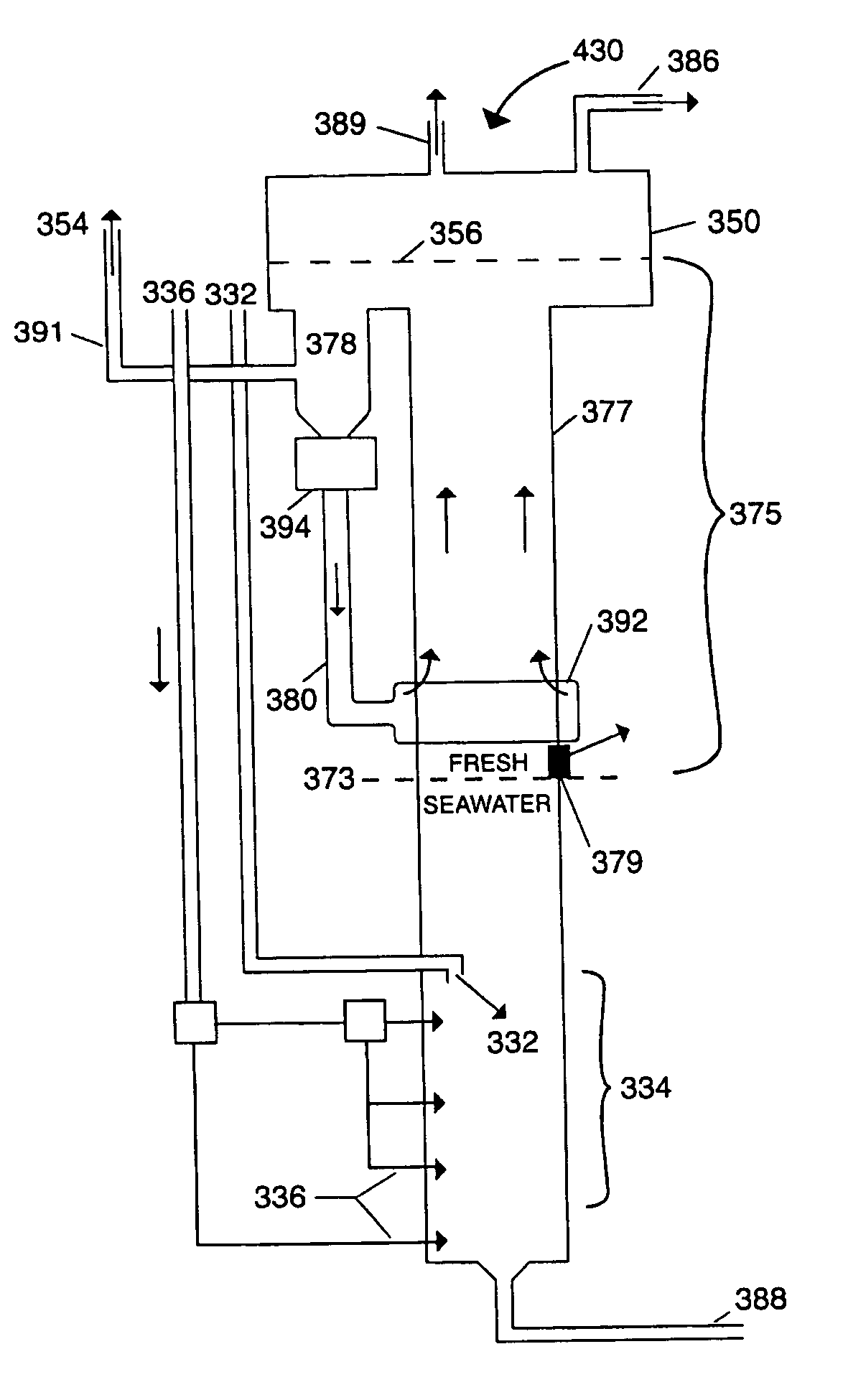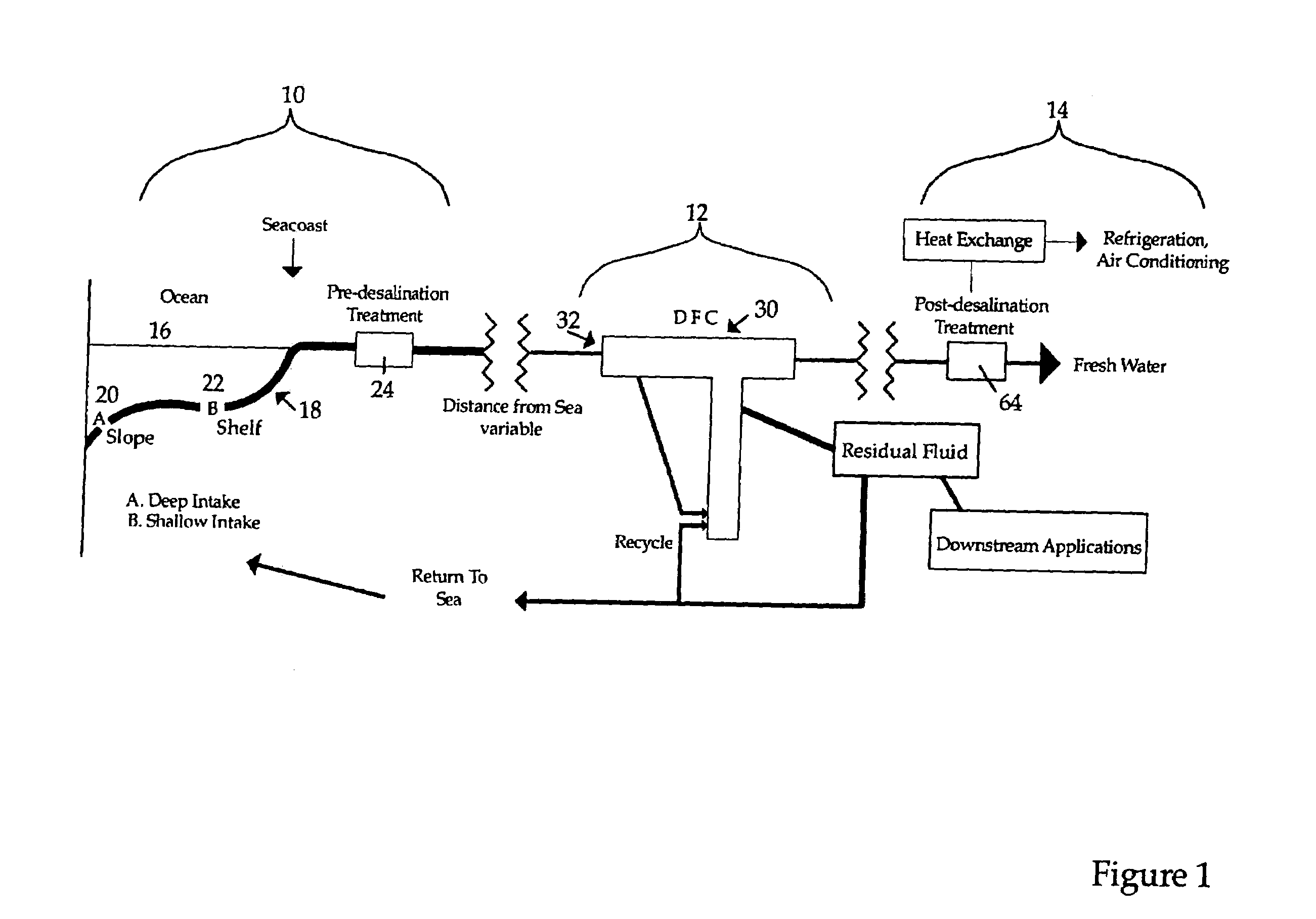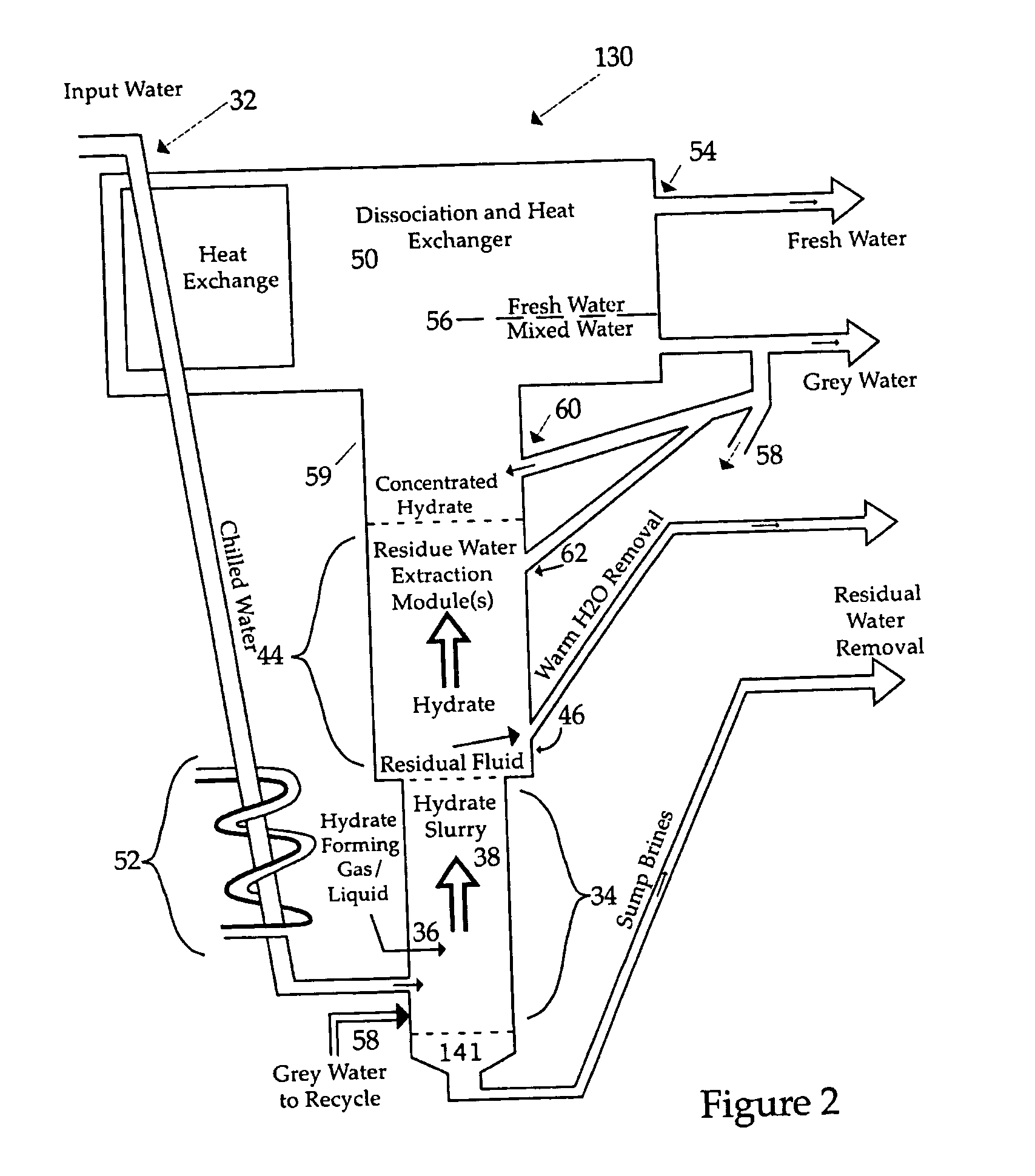Hydrate-based desalination with hydrate-elevating density-driven circulation
a technology of density-driven circulation and desalination, which is applied in the direction of vacuum distillation separation, separation process, vessel construction, etc., to achieve the effect of increasing the rate at which hydrates, improving heat dissipation, and more hydrates
- Summary
- Abstract
- Description
- Claims
- Application Information
AI Technical Summary
Benefits of technology
Problems solved by technology
Method used
Image
Examples
Embodiment Construction
[0025]A land-based desalination installation is shown schematically in FIG. 1 in generalized fashion. The installation may be divided roughly into three sections or regions: an intake portion 10; a water purification portion 12; and post-processing and downstream usage section 14.
[0026]The intake portion 10 consists essentially of the apparatus and various subinstallations necessary to extract seawater from the ocean 16 and transport it to the desalination / purification installation at region 12, including subaquatic water intake piping 18 and pumping means (not shown) to draw the water from the ocean and pump it to shore for subsequent processing. Large volume installations can be located relatively close to the sea to reduce the piping distance of the input water to a minimum, and establishing the installation as close to sea level as possible will reduce the cost of pumping against pressure head.
[0027]The intake pipeline 18 preferably extends sufficiently out to sea that it draws ...
PUM
| Property | Measurement | Unit |
|---|---|---|
| diameter | aaaaa | aaaaa |
| depth | aaaaa | aaaaa |
| temperature | aaaaa | aaaaa |
Abstract
Description
Claims
Application Information
 Login to View More
Login to View More - R&D
- Intellectual Property
- Life Sciences
- Materials
- Tech Scout
- Unparalleled Data Quality
- Higher Quality Content
- 60% Fewer Hallucinations
Browse by: Latest US Patents, China's latest patents, Technical Efficacy Thesaurus, Application Domain, Technology Topic, Popular Technical Reports.
© 2025 PatSnap. All rights reserved.Legal|Privacy policy|Modern Slavery Act Transparency Statement|Sitemap|About US| Contact US: help@patsnap.com



